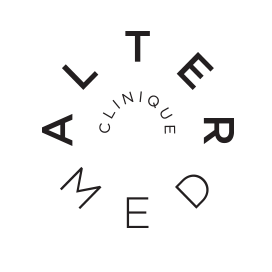Nicolas Duchemin

Shoulder pain, neck pain, headaches, tinnitus, dizziness... What if it came from the jaw?
Very often, the osteopath is led to investigate the causes of the pain at a distance from the place where it is expressed by the patient. It is also not rare that the questioning, the examination and the fine palpation of the practitioner leads him/her to work on the jaw.
The jaw is composed of the mandible, a bony piece that supports the lower teeth and that articulates on either side of the skull, at the level of the temporal bone, just in front of the ear canal. Between these two bones is a disc (meniscus) that allows the bones to fit together perfectly, and many muscles and ligaments support the whole.
The jaw, also called the temporomandibular joint, is therefore at the crossroads of many structures and when these structures fail to function due to excessive contraction of the masticatory muscles, the jaw is no longer able to function. Here, the tensions of the different structures of the left temporomandibular joint caused such a compensation at the level of the cervical vertebrae that the muscles of the neck and the shoulder had to constantly compensate and the tensions at the level of the nerves dedicated to the upper limb near the cervical vertebrae caused a loss of sensation at the level of the fingers. In three sessions, Mrs. T. was able to see a clear improvement in the pain that had led her to consult the osteopath; at the same time, the osteopath suggested that she get in touch with her dentist in order to evaluate the usefulness of an occlusal plate to reduce the grinding of her teeth at night during periods of great stress.
With soft and adapted techniques, the osteopath will have to work in order to allow a return to the balance of the structures involved to find a harmony of functioning between the jaw, the teeth and the masticatory muscles, and to allow the optimal recovery of the various painful areas (local or at a distance) which brought to consult in the first place.
It is important to note that for an optimal result when one wishes to treat in depth the dysfunctions encountered, the notion of PLURIDISCIPLINARITY is extremely important here: dentists, orthodontists (fitting of occlusion disorders), speech therapists (re-education and posture of the tongue), psychologists (management of emotional components sometimes at the origin of certain bruxism and clenching of teeth). In some cases, all of them have a role to play and only a close cooperation between the different therapists will allow an efficient and global treatment.
Do not hesitate to ask your osteopath for advice in case of doubt!


